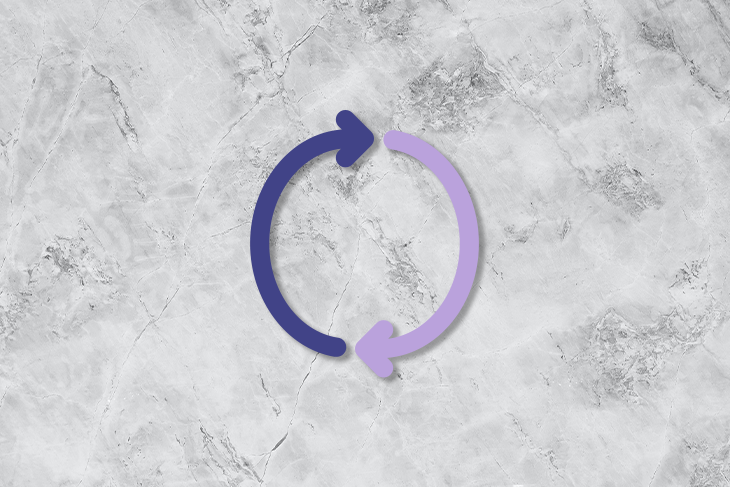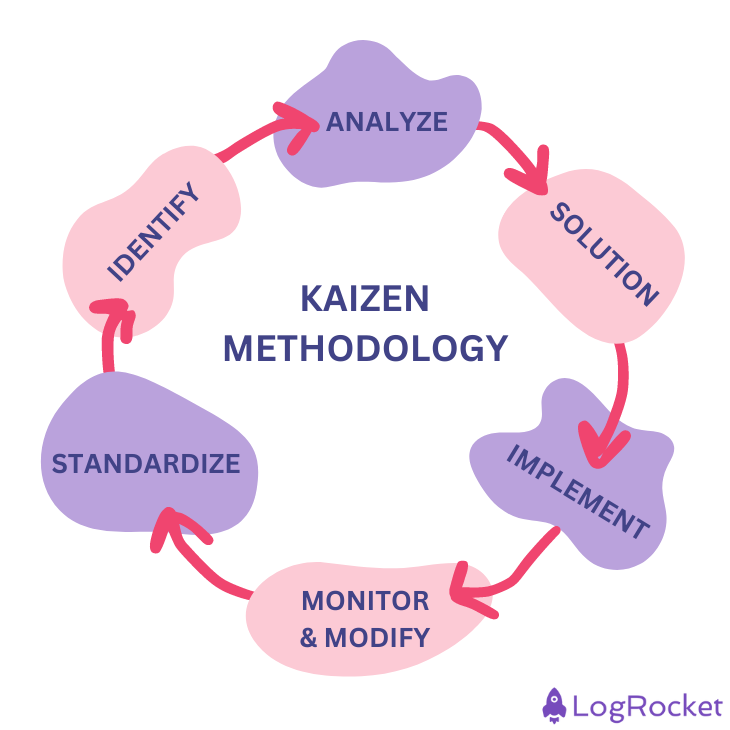If you grew up in the ’90s, you might recall a group that was determined to shake things up, known for their relentless energy and a touch of audaciousness. This group is none other than Cypress Hill — the iconic American hip-hop ensemble that brought a unique fusion of rap and Latin influences to the forefront of music.

The distinct sound of Cypress Hill, combined with their audacious lyrics and socio-political commentary, quickly won them a loyal fan base. However, what made them truly stand out was their persistent evolution — they never settled into the sound of their initial success and consistently sought out innovation, drawing inspiration from a diverse range of collaborators.
Now, you might be wondering why I’m talking about one of my favorite hip-hop artists in an article about product management. Well, the openness of Cypress Hill to collaboration and diverse viewpoints aligns well with the kaizen philosophy of seeking new ideas and perspectives for continuous growth.
In this article, we’ll define what kaizen is and explore its application in product management, strategies for implementation, and how to tackle challenges that may arise along the way.
Kaizen is the product of merging two Japanese words: “kai,” meaning change, and “zen,” representing good. Together, they create a philosophy that champions process optimization and continuous improvement.
At the heart of kaizen lies the concept of making small, incremental changes to processes, systems, and practices to accomplish significant improvements over time.
The Japanese manufacturing giant, Toyota, played a critical role in both developing and popularizing kaizen. Toyota understood that sustained success required an unyielding commitment to constant improvement and the pursuit of unparalleled quality. Kaizen became a fundamental component of the company’s management approach, enabling it to streamline operations, eliminate waste, and optimize productivity.
With its success in Japan, kaizen garnered global recognition as a potent tool for promoting continuous improvement across various industries.
Kaizen encourages organizations to foster a culture of empowerment, collaboration, and innovation through a structured process and a set of principles. That sentences should ring a lot of bells for product managers.
The process for implementing kaizen principles in your organization looks something like this:

Applying kaizen principles alongside this process can help you become the change-maker in your organization, helping to achieve remarkable levels of efficiency, cost-effectiveness, and product quality.
Here are the 10 principles that drive the kaizen philosophy:
Given the relentless quest for innovation, product managers, particularly those working in the tech sector, face unique challenges. Consider the tight deadlines, intricate features, and the ever-evolving customer needs and technologies.
Adopting the kaizen principles described above helps you stimulate continuous improvement, boost performance, and heighten excellence in your tech product management organization. Let’s explore the most significant benefits of applying kaizen in this context:
Kaizen fosters a culture of continuous innovation and iterative development in product management.
Have you heard of agile? By using agile methodologies such as scrum or kanban, you can break down complex features into smaller, manageable tasks. This enables rapid iterations, regular feedback loops, and incremental enhancements.
Continually refining and iterating on features and starting with a minimum viable product (MVP) or minimum lovable product (MLP) helps you ensure you remain at the cutting edge, meet the ever-evolving needs of your customers, and continually improve on solutions.
Efficient resource utilization is another critical aspect of product management. Kaizen helps you identify and eliminate waste, streamline processes, and optimize workflows throughout the customer journey.
This applies to your software development lifecycle (SDLC) as well. For example, by analyzing your value stream, you can identify non-value-added functionalities, minimize delays causing friction, and maximize feature utilization.
This leads to an improved customer experience, which likely increases stickiness and revenue. Simultaneously, it allows you to reduce costs and better allocate time and resources, leading to increased productivity and effective product delivery.
Kaizen facilitates cross-functional collaboration and empowerment.
Product managers serve as notable stakeholder managers and bridge builders. By involving team members from various disciplines, such as engineering, design, and marketing, we product managers can tap into a diverse range of perspectives and expertise.
This collaborative environment encourages open communication, idea-sharing, and collective problem-solving. By leveraging the knowledge and skills of the entire team, you’re better equipped to make informed decisions, drive innovation, and deliver high-quality functionalities in your product.
The software industry is characterized by rapid advancements and evolving technologies. AI, anyone?
Kaizen principles empower product managers to quickly and effectively adapt to these changes. All it requires from you is to foster a mindset of continuous improvement and an eagerness to stay up to date with the latest technological trends. You must assess their impact on your product and make necessary adjustments.
This adaptability allows you to seize opportunities, mitigate risks, and deliver products that incorporate the latest advancements. Your market research and competitive analysis will serve you well here. These practices are sorely underappreciated in product management.
Data plays a vital role for product managers, and kaizen underscores the importance of data-driven decision-making.
Set key performance indicators (KPIs) and implement robust analytics systems. Gather valuable insights into product performance, customer behavior, and market trends. A data-driven approach empowers you to make informed decisions, prioritize features and enhancements, and continuously optimize your product based on real-time feedback and measurable outcomes.
Last but definitely not least, kaizen highlights a customer-centric approach.
By engaging with your customers, gathering feedback, and conducting user research, you gain a deep understanding of user needs, pain points, and preferences, often better than the users themselves.
If you lack this customer-centric mindset, it’s time to reconsider your career ambitions in product management. It’s the single most important skill to cultivate.
This customer-centric mindset enables you to develop a product that genuinely meets customer requirements and provides exceptional user experiences.
So we’ve discussed what kaizen is and the potential benefits you can gain by applying its principles and processes in product management.
Now it’s time to dive into the strategies and techniques for successful kaizen implementation in product management.
Firstly, it’s crucial to foster a culture that encourages continuous improvement within the product management team.
This involves creating an environment where everyone involved feels empowered to contribute ideas and insights. Focus on open communication channels and active collaboration, which play a vital role in nurturing this culture. They allow for the exchange of knowledge, feedback, and innovative solutions.
The concept of Gemba, which translates to “the actual place,” involves going to the source of value creation.
In the realm of product management, this means directly engaging with your customers, observing their behaviors, and gathering their feedback.
Adopt this mindset to gain deeper insights into your customers’ needs and pain points, so you can make data-driven decisions and prioritize improvements effectively.
Standardizing work, which involves defining clear processes, documenting best practices, and setting measurable benchmarks, can help streamline workflows, reduce waste, and ensure consistency in your product management activities.
Standardization brings clarity and efficiency, enabling your teams to focus on innovation rather than reinventing the wheel. It prioritizes speed over perfection, and speed can be established through standardization.
Don’t fall into the illusion that successfully implementing kaizen will be a walk in the park. Implementing kaizen is a transformative journey, during which you will undoubtedly face challenges. Let’s explore some of these challenges and the strategies to overcome them, to ensure a successful kaizen implementation.
One of the primary challenges is — cue the drumrolls — securing leadership buy-in and support.
Without active involvement and commitment from top management, you’re in for a rough and long ride.
To overcome this challenge:
For sustained success, it’s vital to instill a culture of ongoing enhancement. Shifting the mindset and behavior of those involved can be a significant challenge.
To build a kaizen culture:
Engaging people at all levels is critical for successful kaizen implementation. However, resistance to change and fear of the unknown can hinder employee engagement.
To overcome this challenge:
One of the common challenges in kaizen implementation is maintaining momentum and sustaining the continuous improvement mindset over the long term.
To overcome this challenge:
Dojo, a financial technology company, has significantly enhanced its customer experience and issue resolution management.
As Dojo expanded, it identified pain points in customer service and understanding product usage. They needed a real-time picture of customer experience, offering complete visibility into how customers use the product.
Dojo’s commitment to delivering customer value led them to leverage LogRocket’s insights to quantify feature usage, adoption, and user frustration points. By analyzing data, the team was able to continuously make informed decisions about feature maintenance and improvement.
The benefits extend to multiple teams within Dojo, including customer support, engineering, product management, and user experience. These teams have established a workflow, where issue prioritization is based on the impact or “blast radius” metric. Product managers are able to confirm and prioritize issues, while the engineering team refers to sessions to understand the root cause and replicate the problem without direct customer involvement.
As a result, Dojo’s teams can now prioritize and address customer issues efficiently, freeing up time to develop features that enhance customer satisfaction.
As we conclude our journey into kaizen in product management, it’s clear that this philosophy holds immense potential to revolutionize the way product organizations approach process improvement and product development.
From its origins in Japanese manufacturing to its seamless integration into product management contexts, kaizen offers a pathway to excellence through continuous improvement.
Embracing kaizen empowers you to unlock efficiency, elevate customer satisfaction, and drive success.
Featured image source: IconScout

LogRocket identifies friction points in the user experience so you can make informed decisions about product and design changes that must happen to hit your goals.
With LogRocket, you can understand the scope of the issues affecting your product and prioritize the changes that need to be made. LogRocket simplifies workflows by allowing Engineering, Product, UX, and Design teams to work from the same data as you, eliminating any confusion about what needs to be done.
Get your teams on the same page — try LogRocket today.

A practical five minute revenue estimation method to help product managers compare ideas, drop low impact features, and prioritize smarter.

A practical guide for PMs who want to stop being bottlenecks, delegate smarter, and lead teams effectively with a clear ownership framework.

Stop letting unreliable data block features. Treat data as inventory to track quality, ownership, and ship with confidence.

Learn why slide decks slow teams down and explore better tools like whiteboards, PRDs, and prototypes to improve collaboration and alignment.